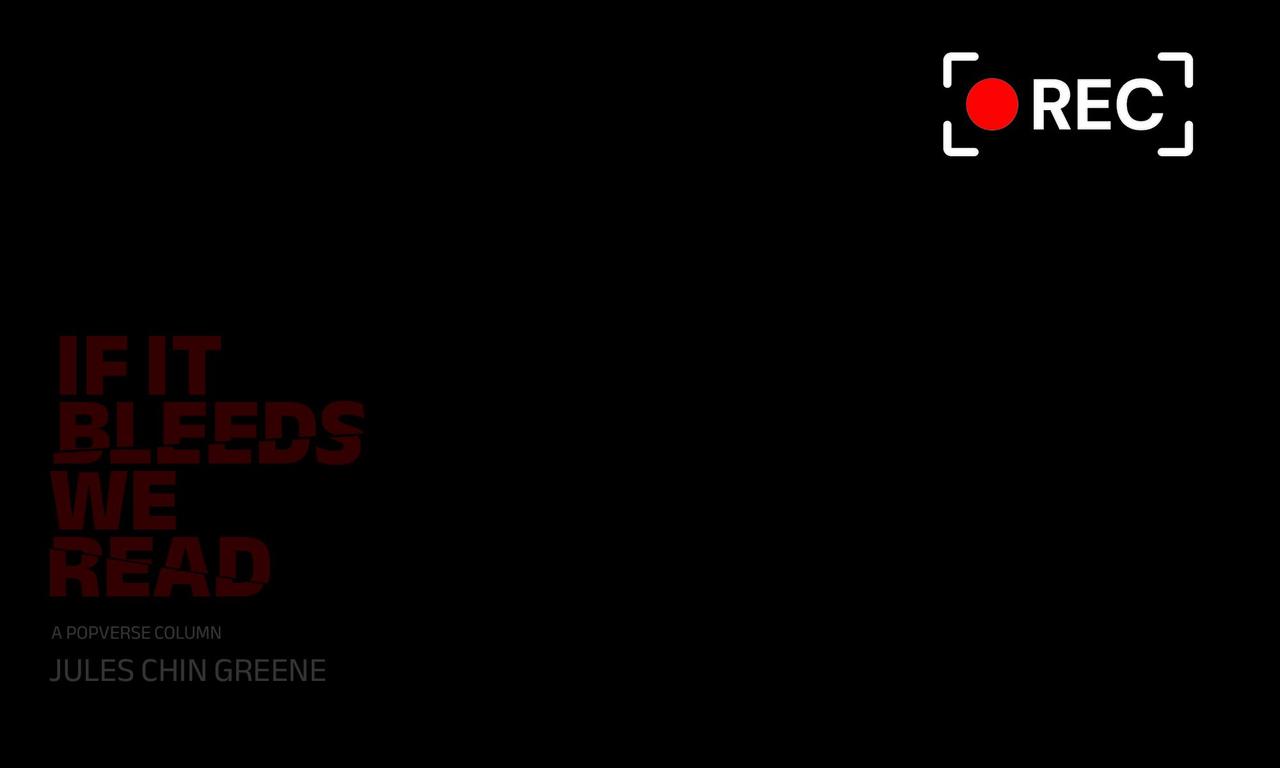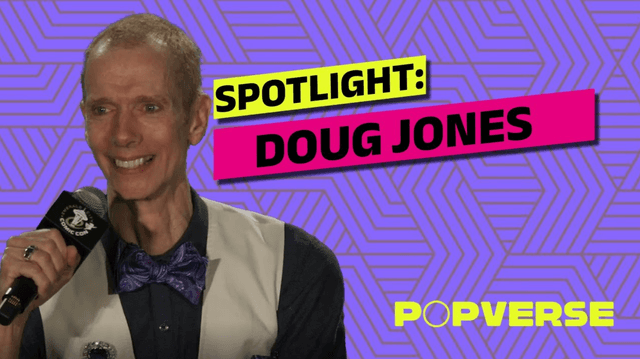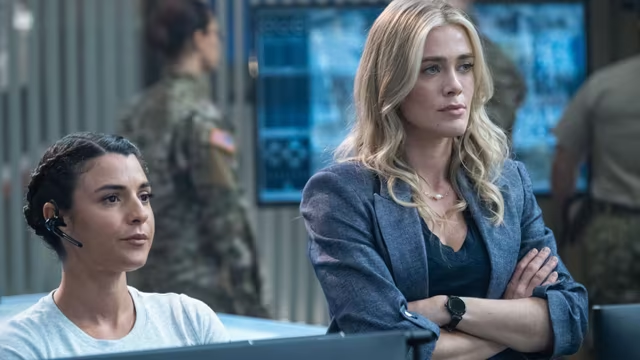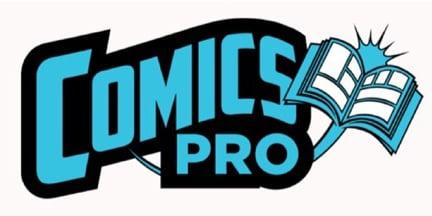If you click on a link and make a purchase we may receive a small commission. Read our editorial policy.
The found-footage subgenre finds new bite as a trend in horror lit with Paul Tremblay's Horror Movie and Richard Chizmar's Memorials {If It Bleeds, We Read]
Paul Tremblay's Horror Movie and Richard Chizmar's Memorials rewrite the scares of found-footage horror.

Popverse's top stories
- Avatar creator James Cameron almost made Jurassic Park - and he’s glad he didn’t
- Watch now: Watch The Lost Boys musical panel featuring Patrick Wilson, Zachary Quinto, and Michael Arden from NYCC 2025
- Get your BRZRKR and SIKTC bandanas on, because BOOM! Studios will be at Emerald City Comic Con 2026
Just like superhero comics and movies, horror novels and movies are deeply intertwined. It isn't surprising, then, that within the past year, there's been an uptick in horror novels about movies gone wrong. But what separates these novels from the largely uneven legacy of found-footage movies made in the 21st century is that these books dig deep into the characters at the center of the story. Instead of having paper-thin characters who exist only to get thrown around the room or disappear unceremoniously into a dark hallway, found-footage novels emphasize who's behind the camera, and what it means for them to be making their film in the first place. Of course, there are a few found-footage films that eschew the worst trappings of the subgenre (The Bay, The Devil's Doorway, and Lake Mungo embody the best of found-footage), but we're here to look at books today.
On the page, writers like Paul Tremblay and Richard Chizmar have more room to let us hang out with the characters than filmmakers do with a 90-minute feature. And the results end up being absolutely terrifying, once all hell breaks loose. After all, a horror story can only really work if we feel invested in the characters.
How do you replicate the effect of a found-footage movie on the page?

But first off, how does one go about writing a found-footage novel? For Paul Tremblay's aptly-titled Horror Movie and Richard Chizmar's Memorials, which begins with a change of font. Tremblay's book tells the story of the only surviving cast and crew member from a cult classic flick called Horror Movie, which Hollywood intends to make a big-budget reboot of. The book is intercut between our narrator's experiences in the present day as well as when he was filming Horror Movie back in the day, and the sequences that take place within the film are written in a screenplay format. So in effect, we don't know how Horror Movie, the original movie, begins or ends, lives or dies, and Tremblay's time skips keep us guessing until the final page.
Meanwhile, in Memorials, Chizmar takes a more documentary-style approach to tell the story of three college students traveling through Appalachia to film a - you guessed it - documentary about roadside memorials. Since the film itself isn't scripted, the "footage" we get is described in prose as our cast of characters roll the camera. The entire story takes place across a week, and the accumulation of footage each day puts us in the exact same shoes as the students themselves, not knowing where all of this is leading. As someone who made documentaries in college, it certainly reminded me of the good ol' days of heading out with a camera and some other equipment, knowing not what lay ahead.
Horror Movie and Memorials prove that we don't need our eyes or ears to know when a story is scary

So while Horror Movie and Memorials aren't your typical examples of a found-footage story, they both get at the transmedia nature of horror and storytelling in general, and the forces that give film or video footage a certain cultural cachet. For Horror Movie, the underground flick being made into a Hollywood movie has immense notoriety because of the scarcity of it. The original Horror Movie movie released to the public consisted only of three scenes, but it has left its mark on culture enough that there are people thirty years later claiming to have a cousin who has a friend who worked on the original film. This highlights the splintered nature of filmmaking, as a movie can only really exist as the sum of its parts - unless you're on some absolute madman auteur beat (complimentary) and making Adolescence on Netflix.
And, of course, how do you know if something is scary? Because you've experienced fear before in your own life. But how do you express what that fear is to someone else? I write for a living and I genuinely cannot explain to you the terror I feel when I can no longer see the bottom of the body of water I'm swimming in. This has been the problem at the heart of almost all human storytelling since we started hanging out around campfires. The advent of cinema and the accessibility of filmmaking equipment has put more tools into more people's hands to tackle this question, but there's always the element of subjectivity. What may "look" or "be" scary onscreen to me may not be scary at all to you.
This is precisely what's so interesting about found-footage books like Horror Movie and Memorials. We can't see the damn footage. We're without our eyes and without our ears and without our cultivated cinema judgment brains to determine the quality of the "footage" presented to us, of whether or not it works for us. What we do have is Tremblay and Chizmar's prowess as writers, and they pose a simple solution to this problem. What we would find scary or not about the footage doesn't matter when it's absolutely terrifying for the characters to experience in the moment. And because they spend so much time getting us invested in these characters from the start, their horror becomes our own. It's empathy in the most pure sense.
In my office, I have this copy of The Exorcist that I used to read from as a kid, because I couldn't understand how words could be scary to people. I had seen Night of the Living Dead and Jack Nicholson's eyebrows in The Shining - I know what scary looked like. But it would take many more years for me to understand that fear is an experience, not a fleeting moment. It is this sensibility that leads Paul Tremblay and Richard Chizmar in Horror Movie and Memorials. Sometimes, in order to get scared, fear is something you need to settle into and let unfold page by page.
Just like yourself, the Popverse staff spends a whole lot of time with our respective noses in respective books. It's why we've come up with stuff like:
- The hottest upcoming fiction
- Queer romance to add to your reading list
- A genre fiction literary column called If It Bleeds, We Read
...and a whole lot more. Join our metaphorical library, won't you? There are no late fees and you can be as loud as you want, so long as the people you live with are OK with it.
Follow Popverse for upcoming event coverage and news
Find out how we conduct our review by reading our review policy
Let Popverse be your tour guide through the wilderness of pop culture
Sign in and let us help you find your new favorite thing.
















Comments
Want to join the discussion? Please activate your account first.
Visit Reedpop ID if you need to resend the confirmation email.